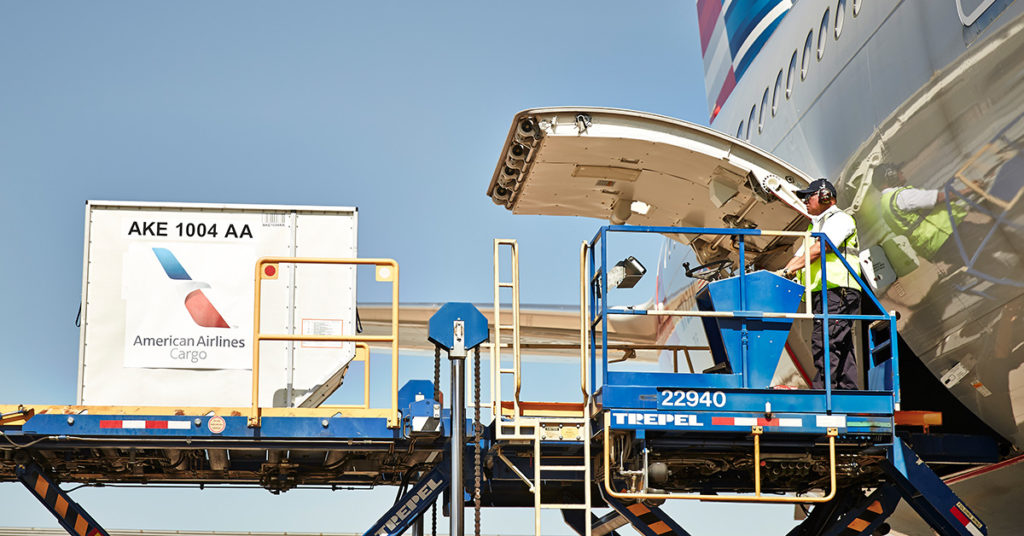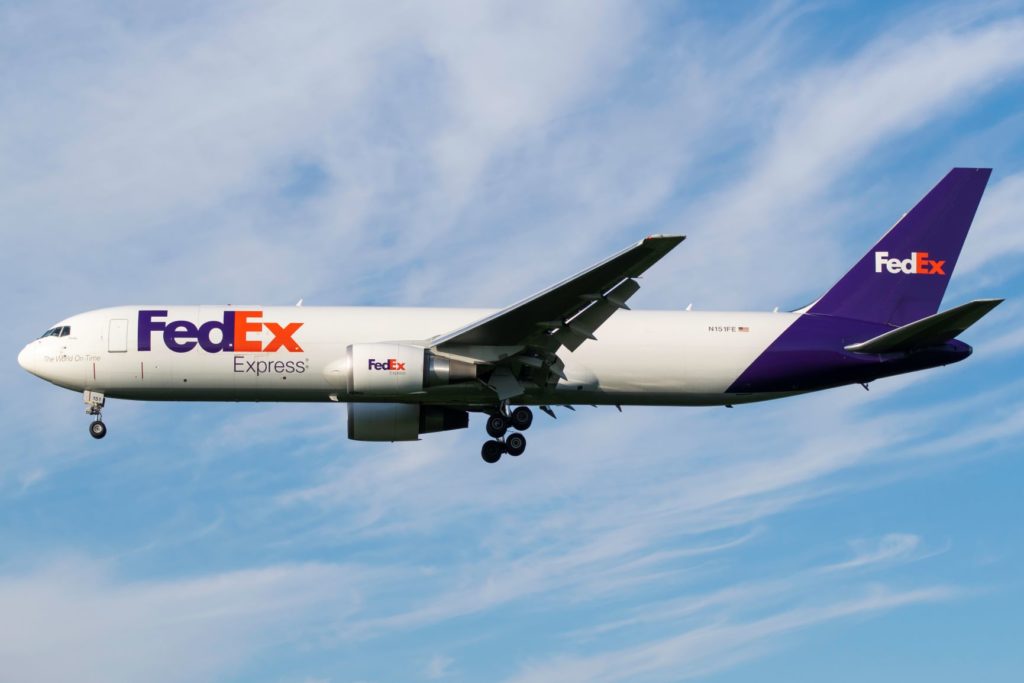Aviation Industry Experiencing Cargo Crunch
With fewer passenger flights in the sky, cargo operators and airlines work to meet global demand for freight
By Evan Dougherty
Published August 24, 2020
Read Time: 4 mins
2020 is likely to go down as the worst financial year in aviation history, but one segment of the industry is actually on the rise: cargo.
Even as passenger revenues fall as a result of the COVID-19 pandemic, the need for e-commerce and transporting other essentials continues to rise globally.
Demand for cargo aircraft has “skyrocketed because of the [higher] demand for personal protective equipment, medical supplies and pharmaceuticals,” explained Brandon Freid, executive director of the Airforwarders Association, a trade group for the freight forwarding industry.
In a report released by the International Air Transportation Association (IATA) in June, global air transport revenues are expected to drop to $419 billion – a nearly 50 percent decrease from 2019.
Most of that decline comes from passenger revenues, which are expected to fall to $241 billion this year, down from $612 billion in 2019.
By contrast, cargo is projected to make up 26 percent of total airline revenue this year – up from 12 percent last year. Revenues are expected to reach a near-record $110.8 billion.
But there’s a catch: Because airlines are operating fewer flights, air freight is experiencing a dramatic shortage of capacity. There simply aren’t enough cargo holds on passenger flights to meet the demand.
Cargo-only flights
To respond to the growing need for cargo transport and to generate other sources of revenue, American, United and other carriers have started operating cargo-only flights for the first time in years.
In March, United quickly formulated a “plan of action” to convert and successfully operate cargo-only flights from its hubs to international destinations – mainly on its fleet of Boeing 777s and 787 Dreamliners.
Likewise, American Airlines has expanded its cargo-only service to Europe, Asia and Latin America. In the second quarter of this year, American transported up to 100 million pounds of cargo throughout its network – ranging from mail to goods and supplies.

American Airlines and United are among a number of airlines to operate cargo-only flights. (Photo courtesy of American Airlines)
In September, American plans to offer more than 1,000 cargo flights to 32 destinations – nearly doubling its August schedule.
United continues to add cargo-only flights to cities that it served with passengers prior to the pandemic. For its second quarter report, United posted a 36.3 percent increase in cargo revenue – helping the company offset losses incurred from the drop in passenger traffic.
“Air cargo continues to be more important than ever,” United Cargo President Jan Krems said in a statement. “This network expansion helps our customers continue to facilitate trade and contribute to global economic development and recovery.”
A ‘Capacity Crunch’
With fewer passenger flights available for cargo, the laws of supply and demand have taken hold. The shortage of cargo space is expected to cause shipping rates to rise by nearly 30 percent and increase the profit margins of air freight, according to IATA.
“Half of air cargo flies in the belly of passenger planes – I would say only 20 percent of those planes are actually flying right now,” Freid said. “Coupled with restrictive scheduling, that drives rates up.”
Some airlines, such as Lufthansa and Emirates, have even strapped cargo into passenger seats and inside overhead bins. Others, such as Air Canada, have received certification to remove seats and create “loading zones” to increase the amount of capacity for cargo. The conversion process usually takes several days to complete.
For cargo operators like UPS and FedEx, the surge in demand for air freight has resulted in increased operations.

Along with passenger airlines, cargo operators like FedEx and UPS have expanded operations during the pandemic. (Photo by Evan Dougherty)
Before the pandemic, FedEx was actually planning to retire 35 aircraft from service, but the company has since reversed its decision – adding 150 flights across its network to meet growing demand. The Memphis, Tennessee-based cargo operator also pulled aircraft out of long-term storage to be placed back into service for increased volume.
UPS has also increased its flying. To add domestic and international capacity, the company is currently growing its fleet by taking delivery of new 747-8 and 767-300 freighters from Boeing.
Cargo at PIT
Cargo has held steady at Pittsburgh International Airport, but the variety of cargo has increased.
As part of a reparation flight program for FEMA, National Airlines Cargo operated five flights into PIT over a two month period – carrying critical medical supplies. The flights, originating from Seoul, South Korea stopped in Anchorage, Alaska, before arriving in Pittsburgh.
Despite passengers being down about 60 percent year-to-date through July, cargo tonnage was only down about 6 percent, mainly due to the drop in belly cargo on passenger flights. FedEx and UPS have also increased operations at PIT.

The U.S. DOT announced an $18.69 million BUILD grant to support the construction of a 75,000-square-foot cargo processing facility and an adjacent surface parking lot to expand air cargo operations at PIT last fall. (Photo by Beth Hollerich)
This summer, PIT and Ted Stevens International Airport in Anchorage, signed an agreement to work together to boost sales and marketing efforts at both airports, with a particular emphasis on cargo.
The recent rise of air freight serves as a benefit to PIT’s initiative in cargo and logistics.
Last fall, the FAA awarded PIT an $18.69 million BUILD grant to expand PIT’s cargo facilities, which will allow extra space for more cargo flights. The new 75,000 square foot facility will supplement the goal of transforming the airport into an international logistics center.
Watch
This Next
Read
This Next





